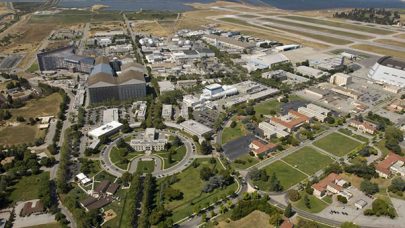
Houston We Have a Solution: Addressing the HPC and Tech Talent Gap
March 15, 2024
Generations of Houstonian teachers, counselors, and parents have either worked in the aerospace industry or know people who do - the prospect of entering the fi Read more…

The IBM-Meta AI Alliance Promotes Safe and Open AI Progress
December 5, 2023
IBM and Meta have co-launched a massive industry-academic-government alliance to shepherd AI development. The new group has united under the AI Alliance banner Read more…

AI-Accelerated Technology Investment Guidelines for HPC
October 25, 2023
When planning an AI or HPC investment, applications are where the rubber meets the road and ultimately determine the benefits of any hardware investment. In add Read more…

IBM’s New Geospatial AI Model on Hugging Face Harnesses NASA Data for Climate Science
August 24, 2023
IBM recently announced its watsonx.ai geospatial foundation model for Earth observation is now available on Hugging Face, the popular open source machine learni Read more…

2023 Winter Classic Finale – VIDEO RECAP
April 24, 2023
February 14th to April 15th – it’s been a long run for the 2023 Winter Classic Student Cluster Competition. 63 students from HBCU and HSI schools learned ha Read more…

2023 Winter Classic: NASA WRF Challenge Results!
April 8, 2023
A wintery mix with a chance for scattered dependencies was the forecast as students tackled the NASA WRF Challenge in the 2023 Winter Classic Invitational Stude Read more…

2022 Road Trip: NASA Ames Takes Off
November 25, 2022
I left Dallas very early Friday morning after the conclusion of SC22. I had a race with the devil to get from Dallas to Mountain View, Calif., by Sunday. Accord Read more…

NASA Spotlights Its Galaxy of HPC Activities
April 15, 2022
“HPC Matters!” was the big, bold title of a talk by Piyush Mehrotra, division chief of NASA’s Advanced Supercomputing (NAS) Division at its Ames Research Center, during the meeting of the HPC Advisory Council at Stanford last week. At the meeting, Mehrotra offered a glimpse into the state of supercomputing at NASA—and how its systems are being applied. Read more…

- Click Here for More Headlines

Whitepaper
Transforming Industrial and Automotive Manufacturing
In this era, expansion in digital infrastructure capacity is inevitable. Parallel to this, climate change consciousness is also rising, making sustainability a mandatory part of the organization’s functioning. As computing workloads such as AI and HPC continue to surge, so does the energy consumption, posing environmental woes. IT departments within organizations have a crucial role in combating this challenge. They can significantly drive sustainable practices by influencing newer technologies and process adoption that aid in mitigating the effects of climate change.
While buying more sustainable IT solutions is an option, partnering with IT solutions providers, such and Lenovo and Intel, who are committed to sustainability and aiding customers in executing sustainability strategies is likely to be more impactful.
Learn how Lenovo and Intel, through their partnership, are strongly positioned to address this need with their innovations driving energy efficiency and environmental stewardship.
Download Now
Sponsored by Lenovo
Whitepaper
How Direct Liquid Cooling Improves Data Center Energy Efficiency
Data centers are experiencing increasing power consumption, space constraints and cooling demands due to the unprecedented computing power required by today’s chips and servers. HVAC cooling systems consume approximately 40% of a data center’s electricity. These systems traditionally use air conditioning, air handling and fans to cool the data center facility and IT equipment, ultimately resulting in high energy consumption and high carbon emissions. Data centers are moving to direct liquid cooled (DLC) systems to improve cooling efficiency thus lowering their PUE, operating expenses (OPEX) and carbon footprint.
This paper describes how CoolIT Systems (CoolIT) meets the need for improved energy efficiency in data centers and includes case studies that show how CoolIT’s DLC solutions improve energy efficiency, increase rack density, lower OPEX, and enable sustainability programs. CoolIT is the global market and innovation leader in scalable DLC solutions for the world’s most demanding computing environments. CoolIT’s end-to-end solutions meet the rising demand in cooling and the rising demand for energy efficiency.
Download Now
Sponsored by CoolIT
Advanced Scale Career Development & Workforce Enhancement Center
Featured Advanced Scale Jobs:
HPCwire Resource Library
HPCwire Product Showcase
© 2024 HPCwire. All Rights Reserved. A Tabor Communications Publication
HPCwire is a registered trademark of Tabor Communications, Inc. Use of this site is governed by our Terms of Use and Privacy Policy.
Reproduction in whole or in part in any form or medium without express written permission of Tabor Communications, Inc. is prohibited.
























